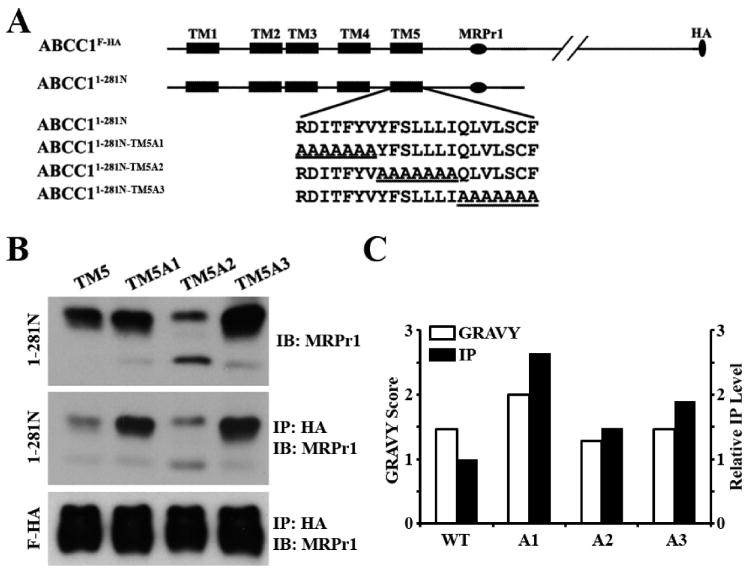Figure 5.

Polyalanine mutagenesis analyses of TM5. (A) Schematic diagram of ABCC1F-HA and the ABCC1281N constructs with TM5 containing polyalanine mutations. The TMs are shown as boxes, and the amino acid sequence of TM5 is shown in single-letter code. The MRPr1 epitope and the HA tag are shown as an oval and circle, respectively. (B) Expression (top) and co-immunoprecipitation (middle and bottom) of the wild type and the mutant ABCC1281N constructs. The wild type and the mutant ABCC1281N constructs were transiently transfected into HEK293 cells with stable expression of ABCC1F-HA followed by co-immunoprecipitation with the HA antibody and Western blot analyses probed with antibody MRPr1. (C) Correlation of hydrophobicity with the level of co-immunoprecipitation. The hydrophobicity of wild-type and mutant TM5 was calculated as described in the legend of Figure 4, and the GRAVY scores are shown. The co-immunoprecipitation levels of the wild type and the mutant ABCC1281N constructs in panel B were quantified using ScnImage and normalized to that of wild-type ABCC1281N.
